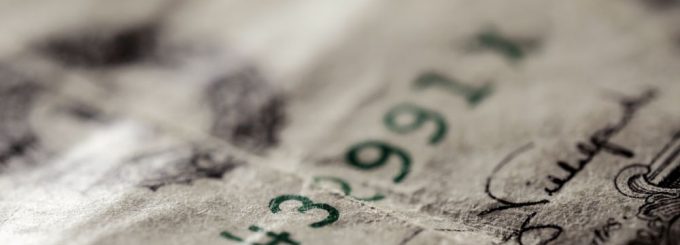How Rare are Dual Serial Numerical Currency Errors?

While most banknotes are created properly and without incident, there are times when errors can occur, and such notes have become quite popular among currency collectors, so much so that these notes can fetch fantastic prices. One of the rarest is dual serial numerical currency errors.
Where Do These Errors Come From?
While common errors consist of things such as absent serial numbers, numerical currency errors are a bit different. Rather than being absent, the serial number is mismatched. Such mistakes are quite rare, so much so that many professional graders are stunned when they encounter them.
About ten years ago the BEP (Bureau of Engraving and Printing), showcased cutting edge bank note manufacturing equipment that was designed to boost output while tightening quality control. Print and examine equipment have been installed at various facilities for the purpose of augmenting U.S. currency creation techniques which are decades old. It is believed by currency experts that dual serial numerical currency errors are the result of this new technology, which received approval in 2019 to create $5 notes.
While newer technology is designed to boost efficiency while minimizing errors, the reality is that even advanced equipment is imperfect and subject to making mistakes, but because the equipment is unique the exact errors will differ from those made in the past. At this time there is extensive research being conducted into this error to determine how it happened, but it is believed the errors were caused by the newer LEPE system that is being used. It could have been a configuration issue which was mechanical, digital, intentional or accidental in nature.
How LEPE Technology Works
To understand modern currency errors, you must know a little about the printing equipment which is used to create it. The technology currently used is LEPE, which stands for Large Examining and Printing Equipment. Starting in 2012, LEPE was installed as a replacement to COPE (Currency Overprinting and Processing Equipment), which is the technology that had been previously used. A facility in Washington D.C. started overprinting one dollar notes using LEPE in 2014.
While COPE utilizes sheets that have thirty two notes, LEPE is capable of handling both thirty two subject sheets as well as bigger fifty subject sheets. This means that notes which are printed within fifty subject sheets may be recognized via the plate position style indicator for each note. Additionally, with the newer equipment the number and letters are identical in size, which is different from the small numbers and big letters that were traditionally used within thirty two subject notes.
Every note which is derived from fifty subject sheets will be overprinted when using LEPE. Furthermore, the seals and serial numbers which are printed via LEPE appear similar to those created via COPE, however, these LEP notes can still be separately identified, since the technology functions differently and the association between plate positions and serial numbers has changed substantially. To determine whether a thirty two subject note was printed via LEPE or COPE, one must use specific calculations.


